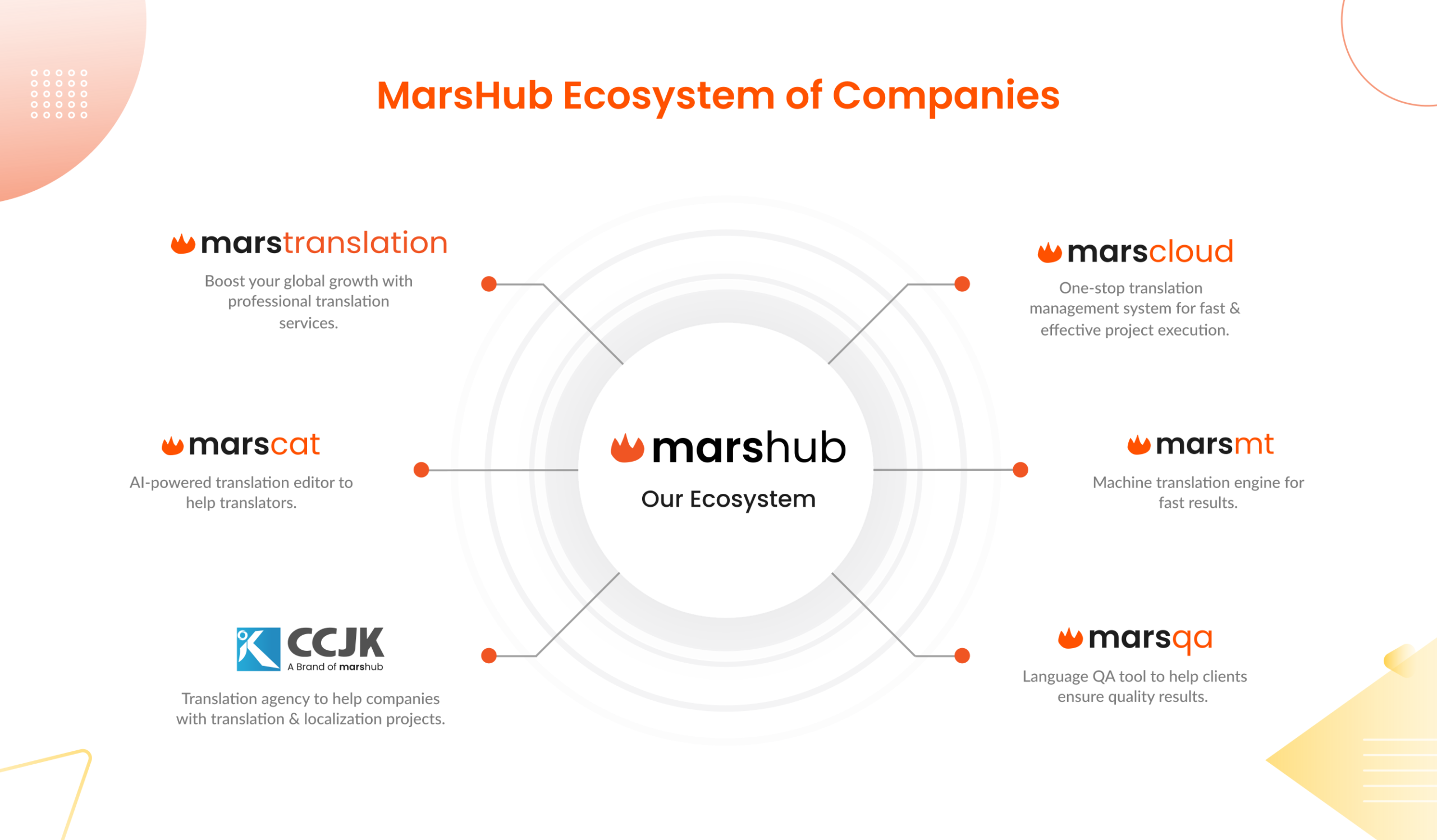Brand localization is critical for businesses, operating in multiple markets. Online buyers are more likely to purchase from brands that speak their local language. It is enough of a reason for international companies to localize their brands for every new market. There is a varied and vast range of localized products available in the market. However, the question is, how can companies choose the best localization project management tool for their brands?
You will find many localization tools online that claim to ease your localization journey. Every localization tool comes with different features and benefits that need to be considered to get your hands on the perfect technology.
Let’s have a look at the key functionalities and perks that a decent localization management system should offer.
Localization Project Management – Introduction
In localization project management, your brand has to undergo a series of processes until it gets adapted to the culture and preferences of the local audience. A typical localization project comprises content translations, design modification, cultural adaptation, format change, and other technical modifications to the brand.
For localizing your project in-house, you have to build up a localization team and invest in other resources to establish proper localization processes. If you are outsourcing your localization project, your localization partner will be sharing your localization project load, entirely or partially. So, you can choose to outsource the complete project or just a few processes. Depending on your localization project’s scope and needs, you can better decide how you want to carry out your localization project.
Who Needs Localization Project Management?
Well, many businesses argue that localization is not for everyone, it is only the specific type of brands that require localization. It could be true to some extent, but most businesses are just avoiding change and innovation. So, here are some major indicators that you should start localizing your brand.
- You are targeting two or more markets that speak different languages and have diversified cultures.
- You are already operating in a foreign market but could not get enough of the market share.
- Your marketing efforts, in a foreign market, are not bringing out the desired results.
- Other competitors in the market are already localizing their brands.
So, if you are seeing your brand in any of the above situations, it is a sign that you need localization.
What Should Be the Features of a Good Localization Project Management System?
From a lot of localization tools and TMS available in the market, it sometimes gets very hard to choose the right option for you. You need to develop a technical understanding of localization tools that impact your overall localization experience. Following are some important features and functionalities your localization system must provide for a seamless and smooth localization journey.
1. An Interactive Interface
No matter how feature-rich your localization system is, if its interface is not user-friendly, it will affect your team’s performance and productivity. Whenever you want to buy a localization system, an interactive interface should be the first thing to consider. A good localization management system has a simplified interface that makes it easier for the teams to navigate around and find the required information. It must promote effective collaboration between localization teams, instead of creating more confusion. In short, the best interface is what makes your operations effortless, enhances clarity, promotes collaboration, and eliminates complications.
2. AI Machine Translation System
An AI-based machine translation tool is a must in your localization management system. It would not just allow you to effectively manage your increasing translation needs but also support your team of translators to speed up the translation management operations. For companies that have to translate content into multiple languages, it is important to have a localization system that offers MT features as well. This way, you can relieve translators’ burden, allowing them to manage more work quickly. You don’t have to completely rely on machines for translation, you can proofread the translations done by MT tools by professional translators. So, the idea is to combine advanced technological tools and human creativity to achieve better results. Moreover, it is also important to consider that your localization system supports sufficient language pairs. You can also customize your language pairs, based on your unique translation needs.
3. Translation Editor
You can find professional MT tools with additional translation management features, such as translation QA and editors. Having a built-in translation editor in your localization system would make the translation management hassle-free. It would also significantly improve your translation quality because built-in editors perform advanced QA processes. Most translation mistakes, such as grammatical, typo, and sentence errors are detected and corrected by these tools.
Moreover, some systems also offer automatic file formatting options. You can easily change the formatting of translated files as per your needs. So, once your translations are done, you can choose your file formatting and preferred style. It will save you time and effort. There is no need to ask your designer to create custom file themes.
4. Real-Time Collaboration with Localization Teams
There is a high need to choose a localization project management system that promotes digital workplace functionalities. Being an international brand operating in different regions, you may have employees working from remote locations. Your localization management system must provide real-time collaboration capabilities to enable effective communication between your in-house and remote teams. It will allow your team to collaborate in real time, regardless of their locations.
While searching for a localization system, look if they provide chat operations, and how simple and seamless communication it offers. With advanced communication facilities, you can easily manage your in-house, remote, and third-party localization teams from one system.
5. Access To Freelance Translators
Entering a new market comes with a lot of uncertainties for brands. The localization demands continuously increase, and to meet those needs companies either burden their existing employees or expand their teams. However, the most reasonable solution to this problem is to get help from a third-party service provider. Rather than piling up work on your employees, you can always outsource your localization processes from a freelancer or LSP. In this case, you must choose a system that has a dedicated section for localization freelancers and vendors.
You can always hire qualified resources and assign them your tasks through your localization system. Most localization management systems allow you to create a new project and assign it to a third-party resource if your internal team is busy doing other important stuff. This way, you can avoid spamming because all the freelancers and LSPs that are registered on such systems are professionals.
6. Control Over Localization Workflows
Lack of control over your localization workflows can create a lot of chaos and complications. That’s why you need to choose a localization system that offers your project managers complete control over the localization workflow. Project managers would create the workflow of a particular project and assign it to any in-house or freelance resource. For instance, when you create a new task under a localization project, you also get the option to create the workflow as per your needs.
When your workflows are streamlined and simplified, it gives your team a sense of clarity over things. It prevents delays and allows the localization teams to work collaboratively on a single system.
7. Support API Integrations
A professional localization management system should support integration into third-party apps to save time and effort. Switching between different apps could be time-consuming, that’s why API integrations are crucial. With integration, you can derive the functionalities of any app to your localization system. This way, you can directly work from your localization system, and all changes will be automatically updated in the integrated applications.
You can ask your localization vendor about the integrations that they offer. Or, you can ask them to add customized app integrations based on your needs. Integrations not only improve your workflow management and speed but also promote more automation in your project management.
8. Easy Payment Methods
If you are choosing a localization system that provides access to freelancers and LSPs, it is important to analyze their hiring process and payment methods. There are different payment methods offered by a localization management system that you can choose to release the payments and invoices of third-party resources. So, a good localization system must keep the payment process easy and simple. Moreover, depending on the location of the hired resources, they must offer familiar payment methods only, for seamless outsourcing.
Summing Up!
With a professional localization tool, you can make your localization project management hassle-free, fast, and more convenient. While buying a localization management system, make sure to offer the features mentioned in this post. From the intuitive interface and MT tools to integration options, there are a few considerations when partnering with a localization system provider. However, the choice of features and functionalities depends on your unique localization needs and brand goals. You have to do in-depth online research to figure out the right localization system that will meet all of your project needs.



